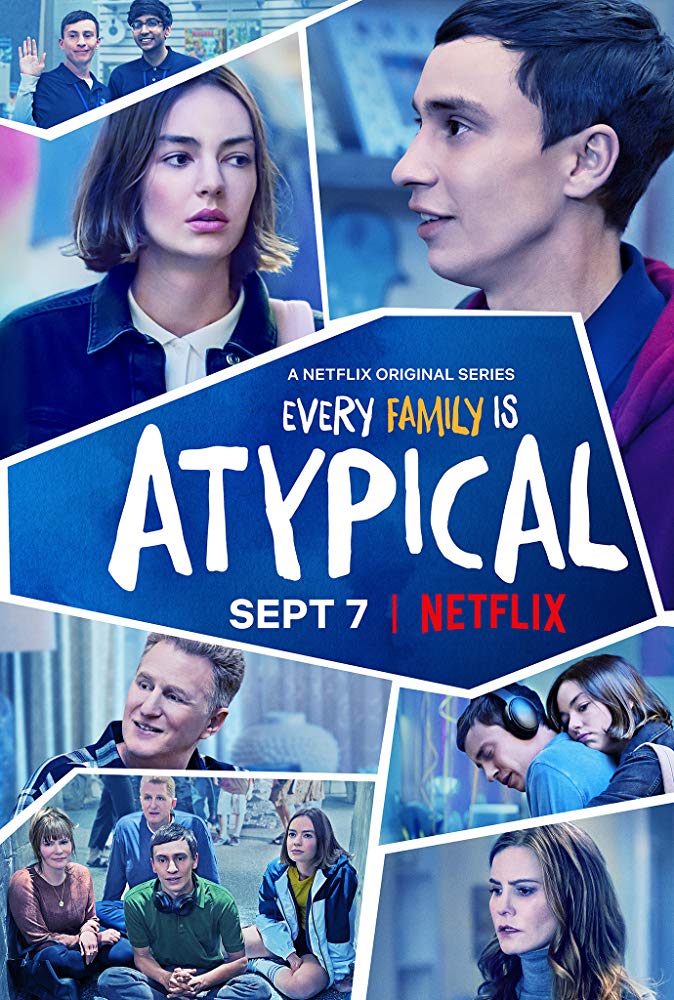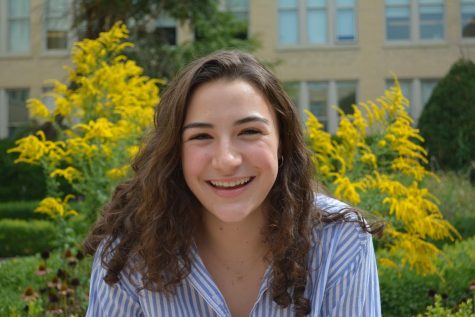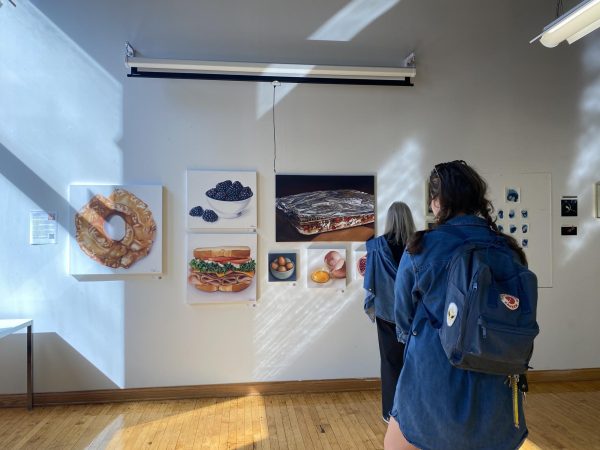Not your neurotypical TV show
‘Atypical,’ season two review
Glaringly bright lights, magnified intensity of people’s voices, feet scuffling on the floor, doors shutting, lockers slamming, a crowded hallway with unfamiliar faces brushing past.
In essence: a sensory overload.
Imagine sensory overloads like this being an everyday experience, one that might make something as simple as going to school every day a challenge.
That’s what “Atypical,” a Netflix original series that aired in 2017, intends to convey. The show revolves around a teenage boy, Sam, who is your average 17-year-old, except for one thing: he’s autistic.
Throughout the show, creator Robia Rashid depicts the life of a boy with autism to help viewers understand autism spectrum disorder (ASD) and how it affects the family environment.
The first season focused mainly on Sam, who decided that one day, he wants to find love. Through many misadventures, he experiences love, loss and everything in between, and by the end of the season, he’s much more independent.

A typical coming-of-age story features themes of finding love and independence, but in “Atypical,” it’s from the perspective of an autistic teenager, so the entire plotline is fresh and original.
The much anticipated season two aired on Sept. 7, and I immediately binge-watched it all. I thought it was really interesting the way they changed certain aspects of the storyline.
For example, season two focused much less on Sam singularly, and more on his sister Casey and her developing sexuality, in addition to her transferring to a new school and the tension between Sam’s parents after an affair.
Although I thought season two as a whole was very dramatic, which I didn’t love, I’m glad the producers decided to shift the focus to the family unit as a whole, instead of just Sam.
The first season spent a lot of time focusing on dissolving the stigma of autism, and I found that it helped me understand what life is like for people on the spectrum.
Although I found this perspective fascinating, some people who watched the show who were also on the spectrum disliked the portrayal of Sam.
“As an autistic viewer, the coming-of-age story inspired familiar frustrations for me with how the disability is usually represented in popular culture: white, cisgender, straight, intellectually gifted and totally lacking in human empathy,” author Sara Luterman wrote in a review for The New York Times.
I do think this was a good point to make. The show is overwhelmingly white and straight and at least in season one, this lack of diversity made the show boring at times.
However, in season two, Sam starts attending group meetings for autistic kids planning for their future, which allowed viewers to see how diverse the autistic spectrum is.
The actors and actresses who play these characters actually have developmental disorders themselves and are all different races and genders.
Each character comes from a different situation, and as the group therapy becomes a more present storyline trope, viewers begin to see the different ends of the spectrum.
Season two also attacks the lack of LGBT representation when Casey, Sam’s sister, starts having romantic feelings for her best friend. The season ends just as they begin to explore these romantic feelings, but it was enough of an initial introduction into more complicated issues.
However, I absolutely hated how they used Casey’s sexuality as a plot twist. It’s not that uncommon to be gay — after all, we live in a country where more than 11 million adults identify as LGBT, according to Gallup. and Casey being gay or straight or bisexual or whatever she wants shouldn’t be the “shocker” of the season.
By making Casey’s sexuality a plot twist, the show stigmatizes being part of the LGBT community, and especially when one of the aims of the show is to get rid of negative connotations surrounding certain issues, I find it hypocritical.
I am glad that the show isn’t focusing just on Sam, but it overcompensates by dramatizing the other character’s plot lines, like the relationship between Sam’s parents, Doug and Elsa.
At the end of season one, Doug finds out that his wife, Elsa, is having an affair, and the entirety of season two is a “will they or won’t they” get back together that’s just exhausting.
By the end of the season, I didn’t have the emotional energy to care if they got back together or not. This part of the plot was the weakest — it was boring, cliché and overdone.
However, one of my favorite parts of the show was the focus on Sam and Zahid’s relationship.
Zahid is the comic relief of the show, and although in season one he was just a silly guy Sam works with, their relationship develops further in season two. Zahid and Sam become each other’s best friends, and they’re always looking out for one another.
What I really found enlightening and sweet was how their relationship was not defined by a neurotypical and autistic kid hanging out. They transcended labels and more than anything else in the show, helped destigmatize ASD.
“Atypical” has a lot of room to grow, and my biggest critique is that I thought it became much less a comedy, and much more a drama. I know some people might like that, but I like a balanced plotline.
I am excited to see how the storyline progresses, and where Sam and Casey (and yes, maybe even Doug and Elsa) end up.
Netflix has not yet ordered a season three for “Atypical,” but if a season three is confirmed, it’s likely to drop late summer or fall of 2019.
Your donations directly fund the Lane Tech student journalism program—covering essential costs like website hosting and technology not supported by our school or district. Your generosity empowers our student reporters to investigate, write, and publish impactful stories that matter to our school community.
This website is more than a publishing platform—it's an archive, a research tool, and a source of truth. Every dollar helps us preserve and grow this resource so future students can learn from and build on the work being done today.
Thank you for supporting the next generation of journalists at Lane Tech College Prep!

Maggie Nielsen and has been writing for the Warrior since the fall of 2017. She is the president of Podcast Club, a member of Printmaking Club and runs...





